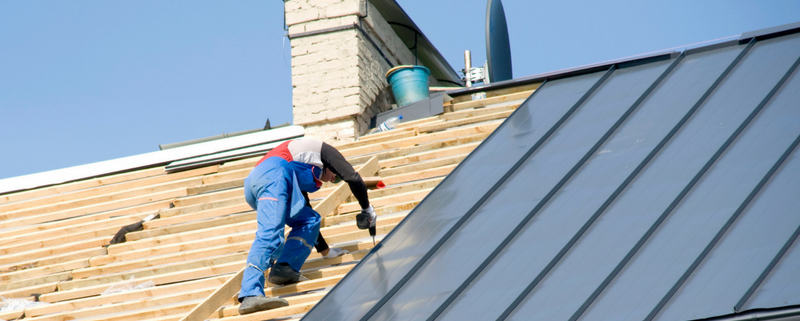Roofing red flags: A building inspection for your roof
When purchasing a new property there are a whole heap of things to be aware when it comes to roofing. Though for many people it’s probably a case of ‘out of sight, out of mind’, it’s important to pay attention to the type and quality of roof a home has, because these factors can significantly impact your home’s upkeep and renovation costs. At The Property Inspectors we know what to look out for – so here are the types of things that you should keep an eye out for (and that we’ll cover in a pre-purchase building inspection report).
Pitch perfect
Replacing a roof can be a costly job – especially when you discover that your roof pitch is no longer compliant with the current building regulations. In the seventies, it wasn’t uncommon for houses to be built with very flat roofs, it was very common for roofs to have only 1 degree of pitch(fall). As you could expect, a lot of these homes have issues with rainwater ponding on the roof, with no fall for the water to drain. The lower the pitch, the more water will pond, which is why under the current building code requires a pitch of a minimum of 3 degrees. The problem is now when you want or have to replace the original low pitch roofing iron, you may have to comply with current Building Code Regulations or Manufacturer’s Specifications. This may significantly impact on the cost of that new roof. When it comes to low pitch roofs, it’s sometimes a case of damned if you do, damned if you don’t!
Form over function
People tend to favour spending money on things they can see more prominently – which is why kitchens and bathrooms tend to get done up before any money goes into areas like roofing or insulation. People are afraid to sink $20k into getting their roof done up because it’s hard to see the benefits of the renovation, which results in many homes still having their original roofs. I’ve previously fallen victim to this mindset myself, having planned to do some maintenance on my own roof but not being proactive enough (even a building inspection expert can make mistakes!). I came home one day to find water dripping through the ceiling when I knew I’d left it too late. A few loose nail fixings allowed water into the ceiling space which caused water damage – oops, I should have re-screwed the roof in the summer like I was going to! Repainting and re-screwing the roof is now high on my maintenance list of things to do.
No roof is immune
Like any part of the home, without regular upkeep your roof can start losing its ability to perform its function – and I think the roof’s function is possibly the most important of anything in your home! Over time, all sorts of things can happen to your roof. If it’s an old nailed roof then nails can work their way loose, sheets can come loose, and the steel can rust. If it’s a concrete tile roof, the ridge and hip capping can crack and fall out, allowing water ingress. Be careful standing on pressed iron tiles as they dent easily and can then split. At the end of the day, no matter what kind of roof you have, you need to be vigilant.
Roofs have a lifespan, which can be increased if they’re well-maintained – so if your house is from the sixties and you haven’t replaced your iron or decramastic roofing tiles yet, then make sure you get a Licenced Building Practitioner (Roofer), to inspect your roof to establish its life expectancy and maintenance required to prevent water ingress. Spending a bit on the roof now may give you the extra time you need to budget for a new roof in the future.
Poor design, poor installation, poor quality
Older homes tend to suffer from more bad design choices than more modern homes. Lots of old roofs don’t have roofing underlay, which means that moisture can more easily get into ceiling spaces, resulting in a condensation and, eventually, mould. Even with more modern homes, you can’t be certain that a home is going to have a high-quality roof, as the installation process can have a big impact on the end result. Poor installation can lead to the loss of a warranty too, so it always pays to be careful. I have seen many new roofs where the protective paint coating has been damaged at installation or by other tradies standing or damaging it while carrying out other work on the building. With a building inspection you can rest easy that we’ll be on the lookout for any potential issues your home may have – roofing or otherwise.
If you’re at all concerned about the roof of a house that you’re looking to buy or sell, get in touch today for a building inspection report – the cost of an inspection is a lot cheaper than installing a new roof! I can’t guarantee the roof won’t leak, but I can give you an opinion as to its condition, good or bad.








